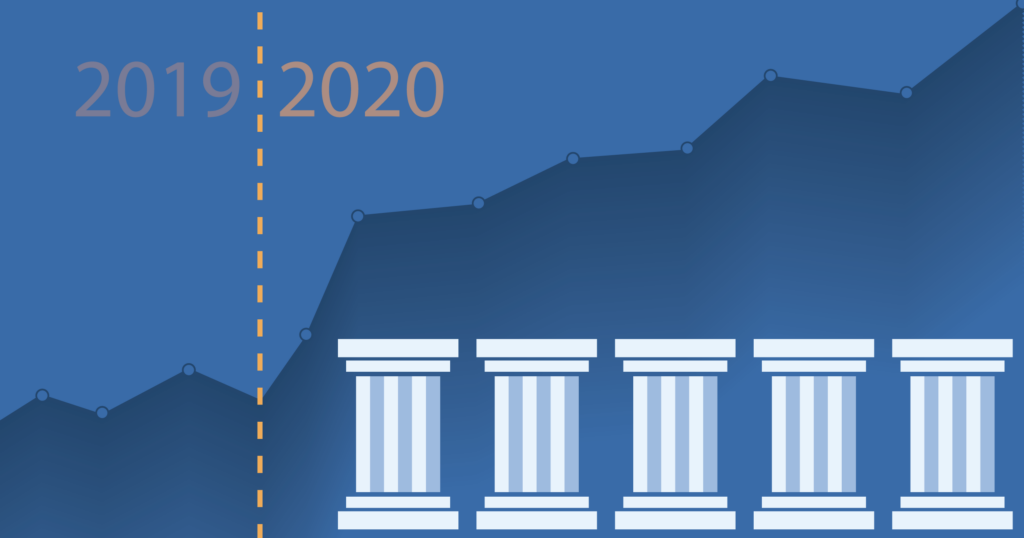The digital age is fully upon us, and just about every action that each person takes during a day creates a data trail. From what we buy to what media we watch, our actions when partaking in the modern convenience of devices ultimately are recorded and stored in the form of data. While this creation and storage of behavioral data has been decades in the making, the use of the data for enabling business decisions and operationalizing processes is growing more mature each year.
While the world becomes more data-centric, competitive pressures dictate that organizations use analytical insights and data-driven automation to stay relevant and profitable. As we enter into the new year, applied analytics will better identify strategies and fuel the implementation of processes that enrich, enhance, and empower organizations to achieve or exceed their goals.
So what exactly do organizations need in order to become data-forward in the year ahead?

1. A strong vision from leadership
An organization’s commitment to being data-driven is only as strong as the commitment by its leadership. Data science should be recognized by business leaders as a key component to reducing cost and increasing efficiencies by operationalizing processes with automation that can scale, as well as a means to identify innovative strategies for increasing revenue. Without executive commitment, departments or teams that are trying to utilize a data-driven approach may run into roadblocks such as lack of funding, lack of cross-departmental cooperation, or directives to prioritize other initiatives before the point of completion. For an organization to truly become fueled by the power of its data, its management must have a strong commitment to staffing, funding, and planning a data-driven approach to the business.
2. Adequate staffing and agile project management
Assembling the right team with the right skill set is imperative when it comes to deploying applied analytic insights. Though there is no one size fits all road map for deploying data science, having a flexible and knowledgeable team is essential. Data-driven initiatives often require an assembled team of data scientists, developers, engineers, business stakeholders, and other skilled positions depending on the project’s size, scope, and stages. Utilizing outside professionals to augment a project team will often accelerate institutional subject matter expertise and improve project turnaround time. The human resources on a data-driven or technical initiatives will be most efficiently utilized when following detailed project plans, ideally managed with an agile process to allow for quickly overcoming bumps along the way.

3. A culture of continual learning
Continual learning should be a pillar of any organization looking to reach or stay at the forefront of their industry. This is especially true for advancing the skill sets needed in technology and data science. Organizational capabilities will naturally expand when goals call for new and fresh approaches to increasing efficiency and revenue and reducing costs from previous years. Programming languages, methodologies, and applications are constantly evolving. Keeping up to date on the latest tech and methodologies so that the right approach matches the given data challenge is dependent on having the most current information available. For many busy organizations, partnering with a strong outside data science partner to benefit from immediate expertise is an ideal way to fast track capabilities, provide internal hands on learning, and model goals and processes from tried and true successes that an external partner can bring from its past experience.
4. Access to timely and accurate data
Often, organizations sit on mountains of untapped data which may be inaccessible to analysts due to the location or format of the data in storage, poorly documented schemas, or even due to misplaced or forgotten legacy data. Mergers and vendor changes additionally complicate historical data, hampering the ability to analyze customers or processes longitudinally. Further, many organizations forgo the utilization of public data, missing an opportunity to build enriched predictive models or perform advanced analysis. Some organizations have a master data management plan that brings together all of an organization’s data sources and related information for easier access. Such a plan is not only a wise investment to allow organizations to more fully utilize data assets, but also to help with security regulation compliance.
When complete data exists and is accessible, accuracy can be an issue due to processing errors that go undetected and uncorrected. For many organizations, processes to identify data anomalies and improve overall data quality are becoming more automated through an AI-based data anomaly detection practice.
5. Realistic expectations and celebrating small wins
AI, big data, cloud computing, deep learning, bots, etc., have the potential to transform businesses, but require the right data and operational agility to be successfully utilized. While an organization’s leadership must be committed to the use of data science and continual learning to stay at the forefront of technological innovation, it is also important to have realistic expectations that take into consideration the limitations an organization faces with data accessibility and accuracy, up to date expertise, and proper project support. This being said, having realistic expectations doesn’t exclude celebrating small wins.
Every step towards becoming more data-driven is a step in the right direction, and analytic insight doesn’t mean the same thing to each industry or organization. Even the most ambitious of organizations should keep the perspective that the journey is made of stepping stones which will grow ever more complex and effective as continual investment in infrastructure and resources are made. Consider celebrating milestones inside of larger initiatives to keep up motivation and the appetite for further progress.

It has long been an adage of corporate life to “innovate or die”, and with the rapid changes in technology and consumer expectations around the use of their data, applied data science is both necessary and potentially tricky. Organizations that are not properly applying data science to achieve corporate goals are missing out on the potential to maximize information right under their noses and setting themselves up to become antiquated compared to their competitors. The time to apply data science is right now, make it happen today, and keep expanding the application of data science every day hereafter.
Fulcrum is the smart, flexible, state of the art data science and engineering partner that brings clients quick successes and long-term learning that improve the quality of their business beyond our presence. For more information on how we can help uncover and maximize the value of your data for a better year ahead, contact us today.



